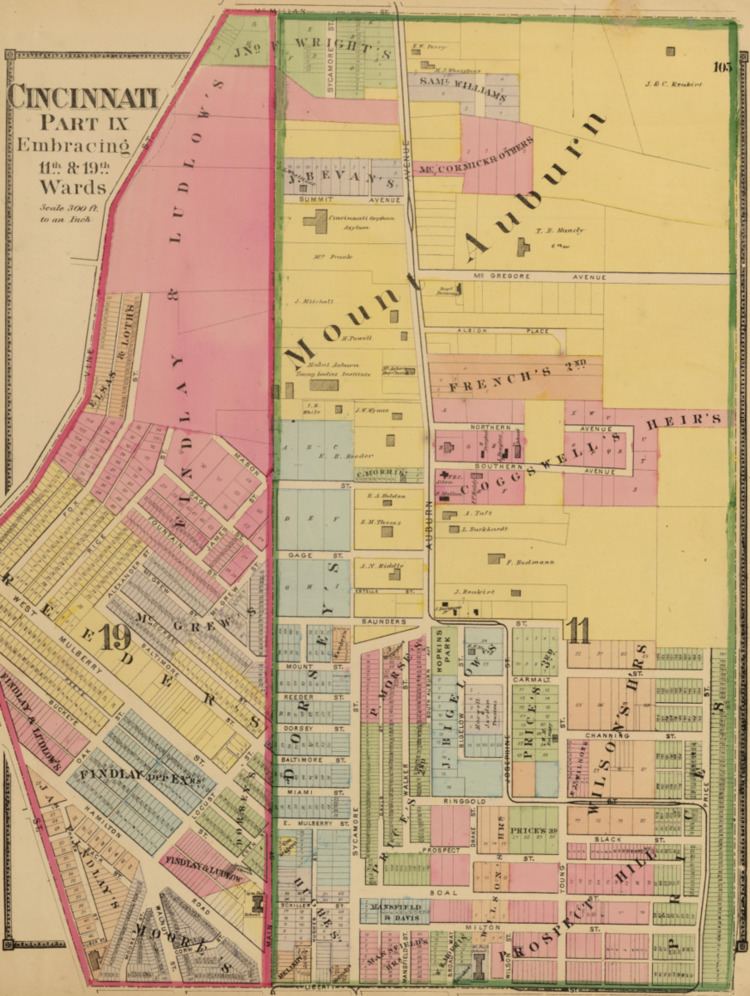NRHP Reference # 73001464 Year built 1819 | Area 17 ha Added to NRHP 28 March 1973 | |
 | ||
Location Both sides of Auburn Ave. from Ringgold St. to Howard Taft Rd., Cincinnati, Ohio Architectural style Mid 19th Century Revival, Late Victorian | ||
Mount Auburn Historic District is located in the Mount Auburn neighborhood of Cincinnati, Ohio. It extends along both sides of Auburn Avenue roughly between Ringold Street and William H. Taft Road.
Contents
The District was placed on the National Register of Historic Places on March 28, 1973 (No. 73001464). Mount Auburn was founded as a hilltop retreat for Cincinnati's social elite where wealthier people could escape the dirt, heat, smoke and crowded conditions of the lower city. Ornate historic mansions with incredible panoramic views still reflect this heritage.
The district contains notable houses of Federal, Greek Revival, Italian Villa, Romanesque Revival, and Georgian Revival styles. The houses date from 1819 to the turn of the century and are associated with the prominent Cincinnatians. Noted residents include President William Howard Taft.
History
Mt. Auburn was for a long time almost the only suburb of the city. It was at first called Keys' Hill, after an old settler, and this name was used until 1837. By 1826 a number of prominent citizens had taken up residence there.
Mount Auburn was platted as a town in 1837. It owes its name to the then newly established Mount Auburn Cemetery of Boston. By 1842, it extended from Liberty Street (Liberty Street got its name because the city laws were not enforced north of it and it was the location of the "northern liberties" – gambling, drinking and carousing) to McMillan Street (note that the historic district only goes as far south as Ringold street, the rest of the Mount Auburn neighborhood to the south is the Prospect Hill Historic District). Mount Auburn was annexed to the City of Cincinnati in 1849.
Buildings and Sites
Other Notable Architecture
Schools
Medical Institutions
Commentary
I was quite charmed with the appearance of the town, and its adjoining suburb of Mount Auburn: from which the city, lying in an amphitheatre of hills, forms a picture of remarkable beauty, and is seen to great advantage.
Behold the Fifth Avenue of Cincinnati! It is not merely the pleasant street of villas and gardens along the brow of the hill, though that is part of it. Mount to the cupola of the Mount Auburn Young Ladies' School, which stands near the highest point, and look out over a sea of beautifully formed, umbrageous hills, steep enough to be picturesque, but not too steep to be convenient, and observe that upon each summit, as far as the eye can reach, is an elegant cottage or mansion, or clust of tasteful villas, surrounded by groves, gardens and lawns. This is Cincinnati's Fifth Avenue.
